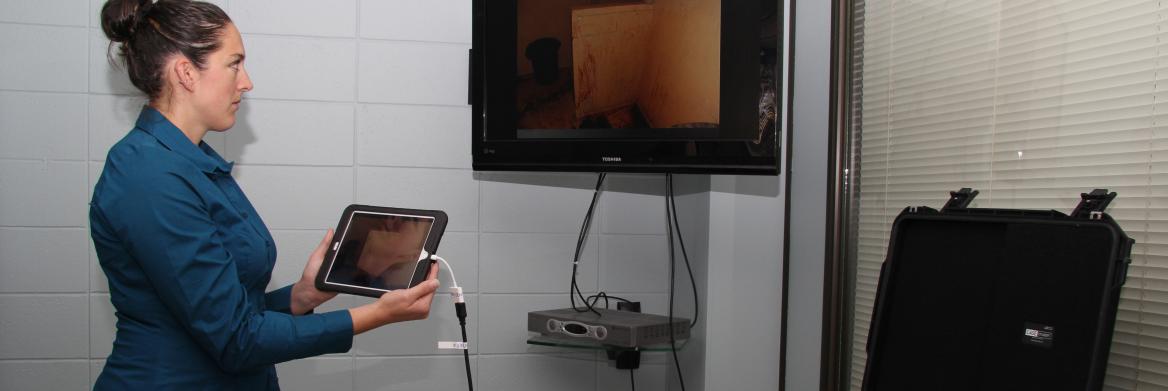With the swipe of a finger, Saskatchewan courtrooms flipped into the 21st century, following the first criminal conviction made using tablet computers. A Regina jury trial found Adam Riley Cyr guilty of second-degree murder in January 2015, based on evidence and photos presented on the touch-screen devices.
Now, two years after they first appeared in court, tablets are becoming a staple for major trials in Regina.
"It's the ease of having everything at your fingertips," says William Jennings, an associate regional crown prosecutor. "All the photos are in a nice compact form and you can just flick through all the evidence in a logical order."
The Regina Police Service forensic identification unit (FIU) spearheaded the shift from hard-copy photo books to tablets — a move that saves time and money for the team that's responsible for organizing evidence packages for trials.
But it's not all about economics. Aside from streamlining the photo compilation process for police, the tablets can also benefit lawyers, judges and jury members in major trials.
"The transition to iPads isn't just about financial benefit," says Sgt. Laurel Marshall, who heads the FIU. "It comes down to the fact that it's an effective way to present evidence."
Tablet takeoff
Long before the Cyr trial began, the identification unit was already looking for ways to update how they compile evidence photos for court. Previously, images would have to be printed out, numbered and arranged in binders for presentation in a trial.
In 2012, the unit hit a breaking point after a last-minute request to make up nine of these photo books for a case. The team spent an entire weekend of overtime hours to finish the binders. But just before the case was presented, the crown and defense came to a plea agreement. As a result, the photos never made it to court and had to be shredded.
"We did the calculations and the math showed we spent about $1,800 to create these photo books," says Sgt. Dean Yadlowski, previous head of the FIU. "It would've been much more economical to spend that money on new technology — we wouldn't have had to shred tablets or TVs at the end of the trial."
So, in 2014, the unit purchased two kits, each including four tablets, to present photos in court. Instead of printing out each image, digital files can simply be uploaded onto each device. Large trials such as homicides or assaults stand to gain the most from using the tablets, since they often have hundreds of crime scene photos, autopsy photos, maps and other images.
The unit now has four tablet kits, which have been used for 25 trials since they were first introduced.
Picture-perfect presentation
Since maintaining justice is a priority in the courtroom, Regina police are careful to make sure that new technology is accessible for all participants of a trial.
"It's all about taking small steps and making sure everyone is not only comfortable with the process, but completely assured that there's a fair trial," says Marshall. "If someone has reluctance to it, we are willing to print out photo books and accommodate them."
In trials where the tablets have been used, one is given to the judge, one to the defense, one to the prosecution and one for any witnesses taking the stand. In jury trials, the witnesses' tablet is connected to a TV screen for the jury to see — as the witness flips through photos, they all see the same thing.
"You're getting a more accurate account of what is unfolding within an investigation or interview," says Marshall. "It's far more interactive and it leaves fewer questions to be asked when you can actually see and hear the evidence presented."
An evidence package presented on a tablet can also include more than just photos. The electronic devices can show clips of police interviews, crime scene videos and animations.
"Using iPads allows the prosecutor to present a more coherent story," says Yadlowski. "It can flow better, they can point something out in a photo and users can zoom in to photos to see close-ups and zoom out to see context."
Crown prosecutor William Jennings agrees.
"It certainly gives you a real feel for the case and puts you in the shoes of the investigators," he says. "All court participants can benefit from this new technology."
